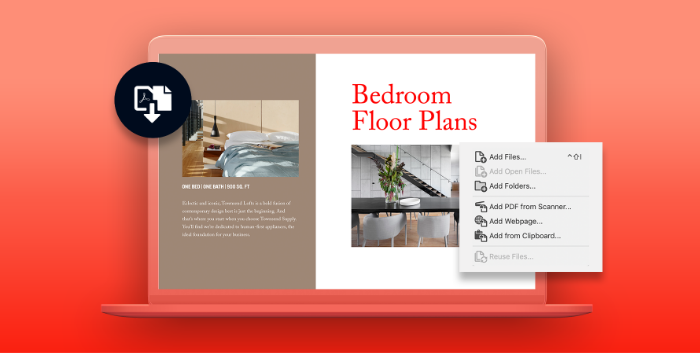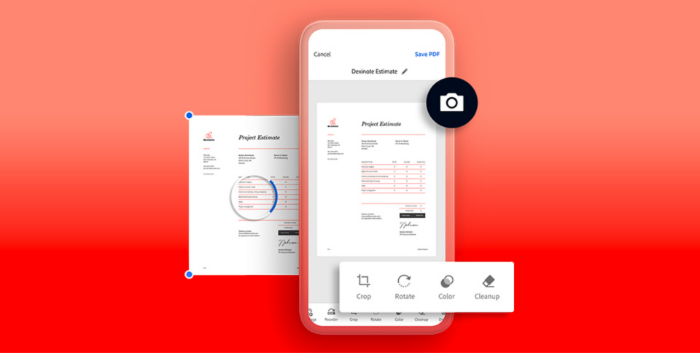Adobe Acrobat
The benefits of using home document management software.
Create your own paperless filing cabinet with a document management system.
Adobe Acrobat
Create your own paperless filing cabinet with a document management system.

Work smarter with a home document management system.
These days, more and more living spaces double as workspaces as people make the move to remote work. From software automation to digital workflows, new technology and apps that replace paper documents, decrease clutter, and are not easily misplaced make this transition easier.
Whether you work for a small business, a large company, or are self-employed, effective document management can help save time and boost efficiency with quick searches, real-time feedback tools, and more.
A document management system (DMS) is a set of software tools that tracks and stores your electronic documents with cloud storage. No matter the file formats or file types, a DMS can help you keep tabs on all of your business and personal documents, including scans of paper documents, PDF files, and Microsoft Office spreadsheets.

Besides being a cost-effective method of document control and indexing, a DMS like Adobe Acrobat offers:
While every DMS has unique benefits, most document management systems have similar attributes.
Defined as data about data, metadata for each document gets uploaded into the system in the form of tags. This generally includes information like file name, title, upload date, and a short description about the document itself.
Assists each user to find documents based on content, identifiers, and metadata.
Secure document management protects confidential and sensitive information through encryption and authentication security features. Administrators can control which users are able to access files in your document storage.
Directs the traffic of documents automatically, whether you’re an entrepreneur or work with an organization. Create document workflow management instructions around storing documents, file sharing, records management, and more.
Allow users to share documents, work on electronic documents together, and use other key features with all changes automatically monitored and recorded by the system. Acrobat Reader and other free PDF reader apps can enable family members to view and provide comments on your files.
Helps users retrieve previous editions of digital documents — useful for when a document is frequently updated.
To keep up with real-time feedback, make sure your DMS comes with functionality on mobile devices like smartphones or tablets. Or find document management software that also provides integration with a mobile app.
Note: Document management is similar to content management but with a critical difference. Content management focuses on unstructured content like media files or web pages instead of documents.

A DMS with the right functionality can help you go paperless, eliminate waste, help the environment, reduce your stress, consolidate your space, and make your workflow more efficient. Acrobat’s optical character recognition (OCR) technology can make this process even faster. It finds text in scanned documents and extracts and converts it into PDFs you can edit for free.
And that time savings isn’t a small efficiency. Studies show that more than 46% of workers waste time every day on paper-centric workflows and spend more than 11 hours per week on document management issues. And five of those hours are considered unproductive. Lost productivity equals lost profits.
With a solid DMS, you can free yourself from the clutches of disarray with a streamlined automation process, and make sure your time and energy are focused on business areas that need more attention.
Don’t let your location or lack of office equipment interrupt your document scanning workflow. Adobe Scan is a free mobile scanner app that can help you capture everything from business cards to brochures with your phone’s camera. Take a photo and Adobe Scan converts it into a high-quality Adobe PDF file.
With AI-powered features like image sharpening and contrast removal, you’ll get high-quality scans every time. After you get what you need, comprehensive options allow you to save the scan in different file formats like JPEG, convert to other formats like JPG to PDF, share it with others over social media, or even incorporate it into another document.

There are five general methods of filing that people use to organize their documents. You can set up a DMS with whichever method you prefer, and you can sort and filter your documents by these criteria as well. The five methods of filing are:
You can set up a successful system by thinking about the kinds of documents and processes you already have in place. Then think about the kinds of rules and procedures that will help you keep things organized: